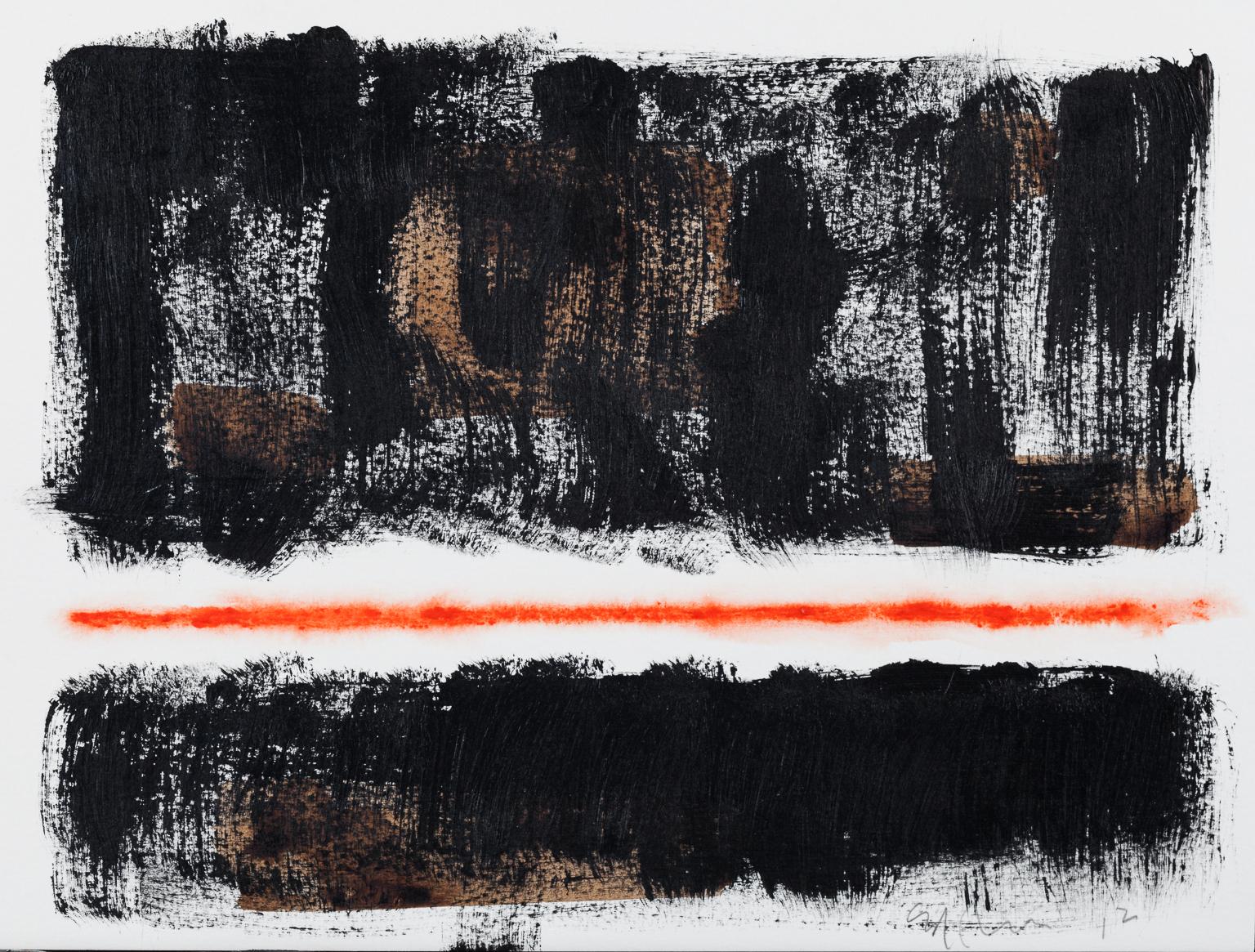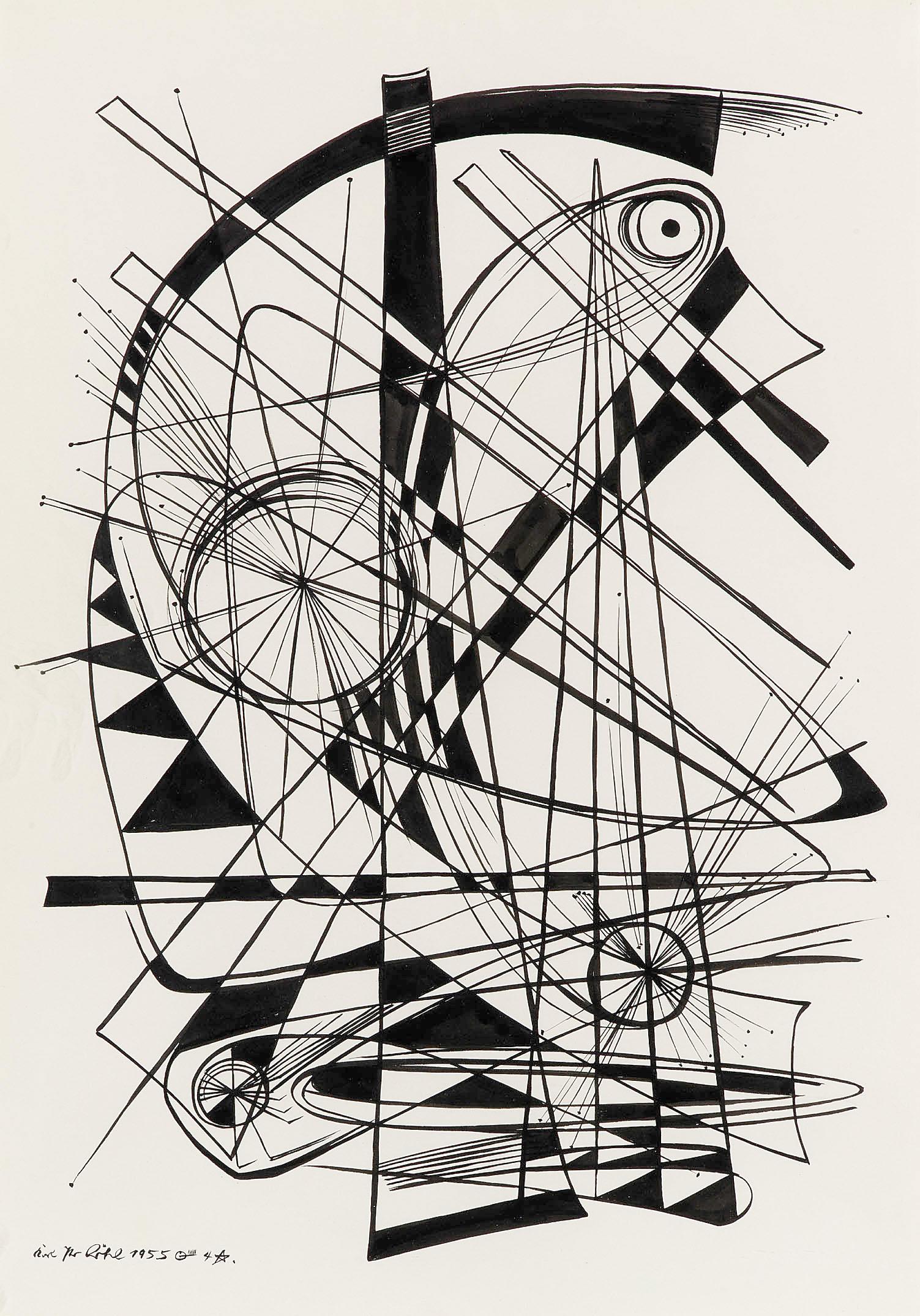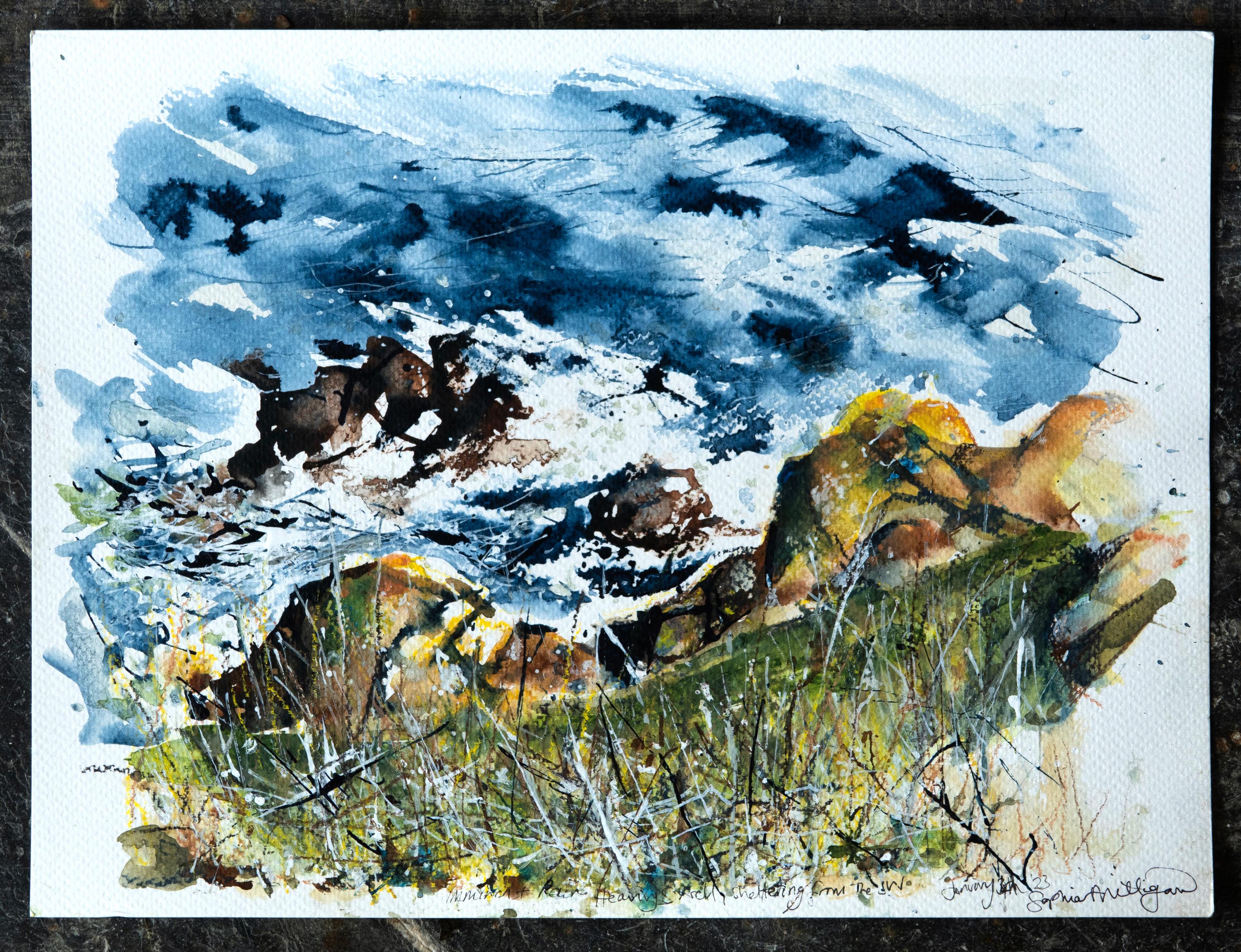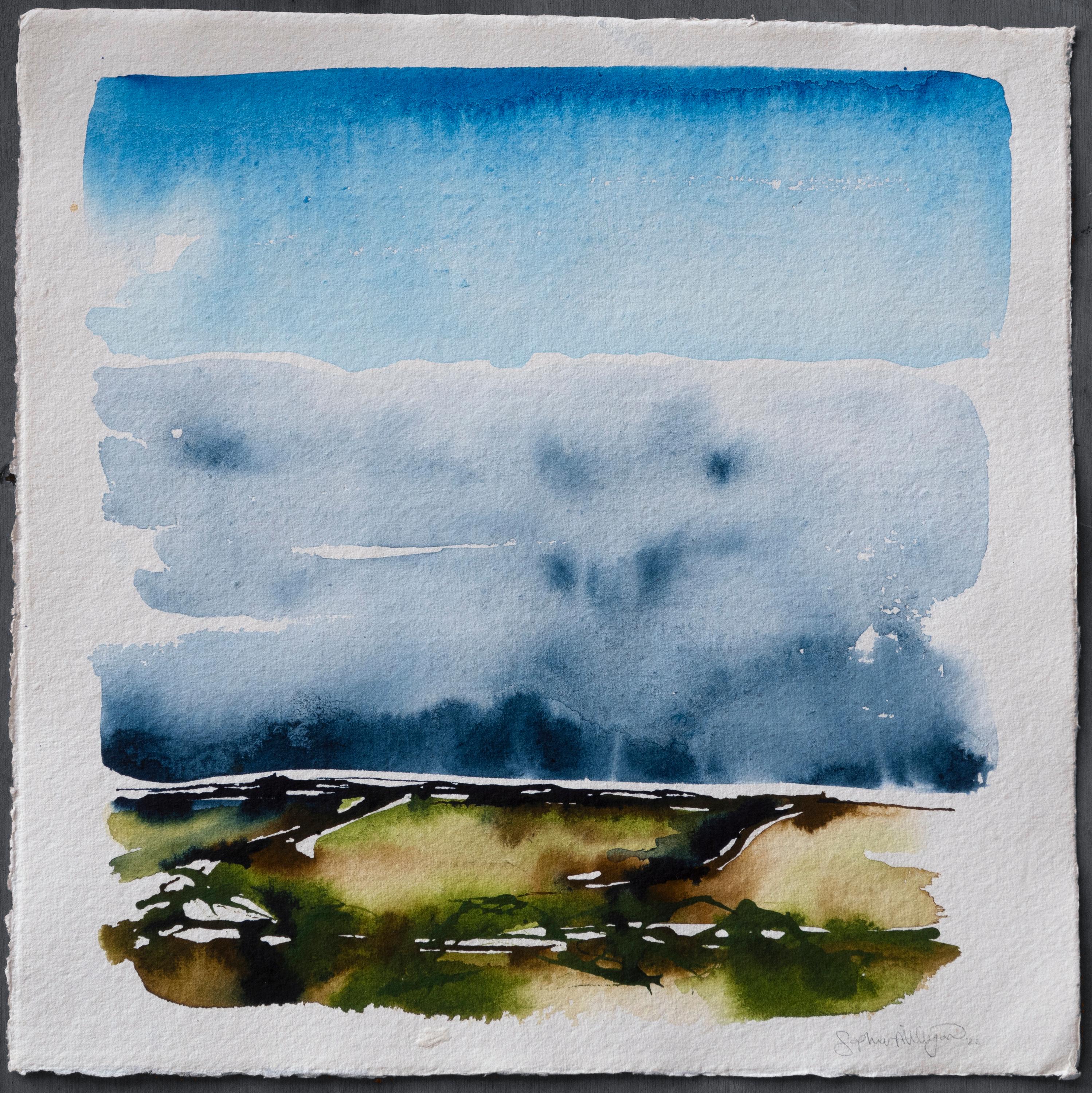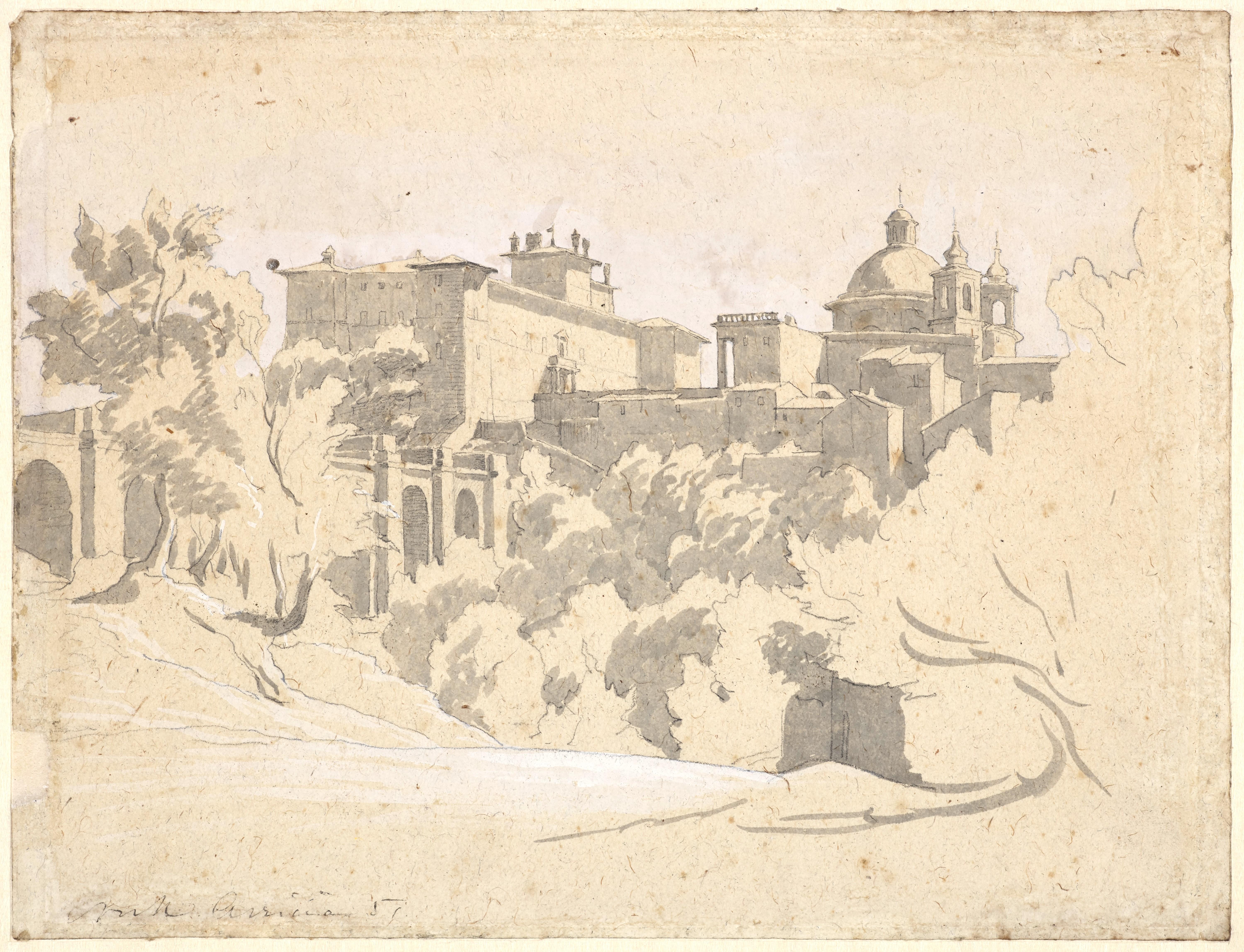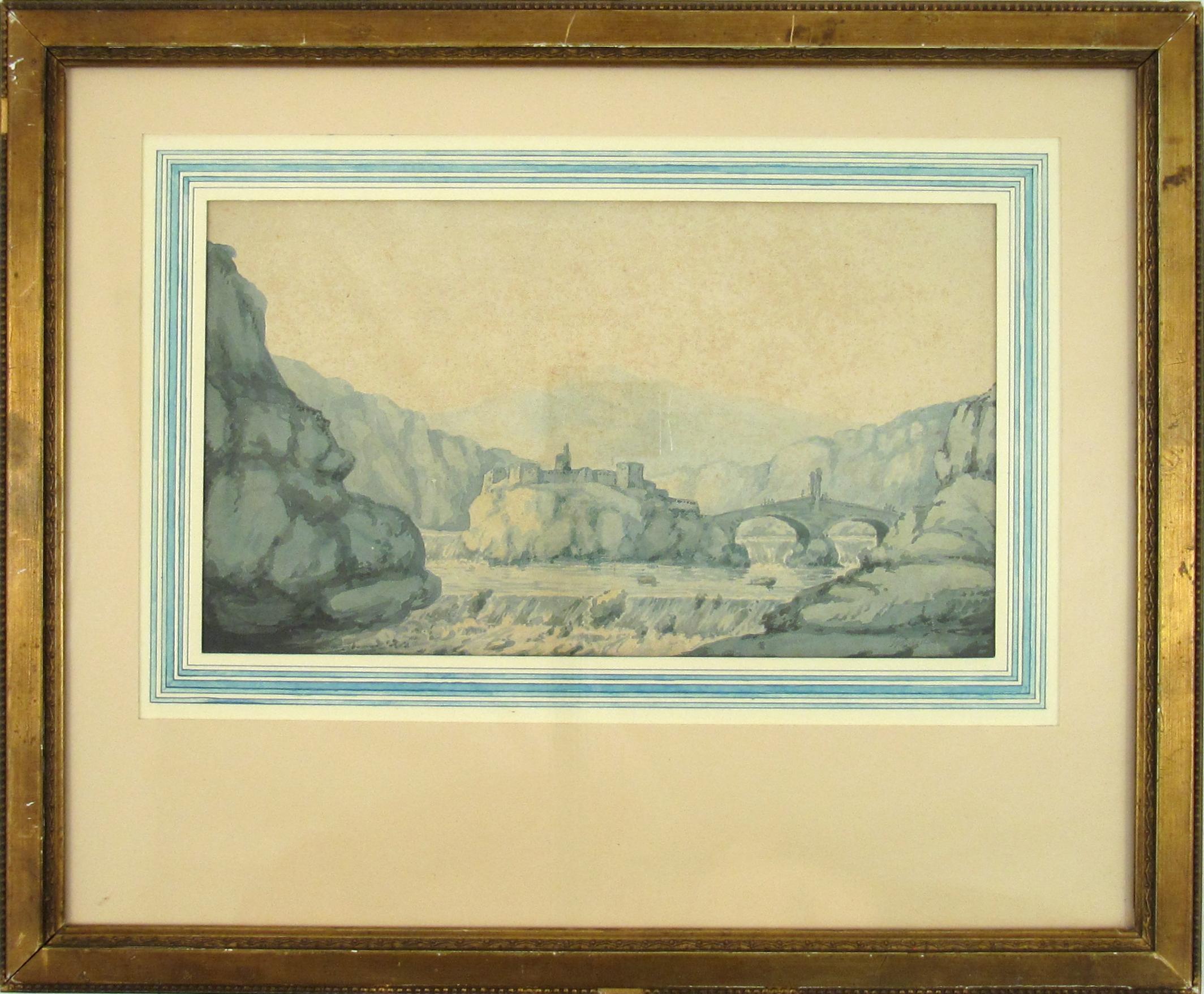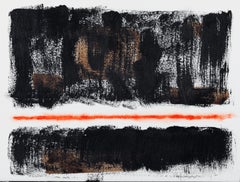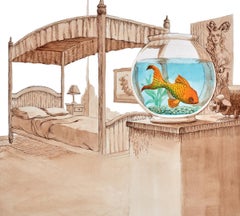
"Fish Named Swimmer" ink and watercolor illustration, bedroom scene, fish
1 of 5
Kate Samworth"Fish Named Swimmer" ink and watercolor illustration, bedroom scene, fish 2018
2018
About the Item
- Creator:Kate Samworth
- Creation Year:2018
- Dimensions:Height: 9.5 in (24.13 cm)Width: 10.5 in (26.67 cm)
- Medium:
- Period:
- Condition:
- Gallery Location:New Orleans, LA
- Reference Number:1stDibs: LU82133532362
You May Also Like
- ThreadBy Ed TouchetteLocated in Gloucester, MAEd Touchette (b. 1948) is inspired by a love of architecture and public spaces to make paintings which express joyful wonder at our built environment — ol...Category
2010s Bauhaus Abstract Paintings
MaterialsInk, Acrylic, Watercolor
$1,400 - CompositionBy Karl Peter RöhlLocated in Zug, CHComposition on paper from the 50s from Karl Peter Röhl.Category
20th Century Abstract Drawings and Watercolors
MaterialsIndia Ink, Watercolor
- 'Towards Le Scathe Cove'. Contemporary Landscape, Rural, Sea, Ocean, Beach BlueBy Sophia MilliganLocated in Penzance, GB'Towards Le Scathe Cove'. Contemporary mixed media landscape painting, Cornwall Original Artwork, Unframed _________________ January morning, heavy swell and a strong southwester, rain imminent, sheltering beneath lichen furred granite outcrops. A plein air painting from the series 'Holan ha Dor' (Meaning 'Salt and Earth in Cornish). West Cornwall is a harshly beautiful peninsula, jutting out into the wild tireless ocean, shaped and moulded by powerful salt laden Atlantic winds, and criss-crossed by ancient, tangled hedgerows. Drawn to the immediacy of moments, underpinned by enduring narratives, Sophia's fluid expressive paintings explores the flux and balance in the nature of all things: The freedom of the air and solidity of the soil; Of anchored stone and rhythmic water; Of human narratives written in the wild landscapes; In the sensual interplay of light and shadow. They capture an essence of the equilibrium between wild raw energy and serene stillness; chaos and harmony; and the enduring and the effervescent. Mixed media on watercolour paper Signed and inscribed Unframed 23 x 30cm / 9 x 12 inches __________________________ About The Artist Sophia Milligan is a contemporary multidisciplinary artist, exploring discourses on permanence & evanescence; the eternal, cyclical absolutes of birth & death; motherhood & childhood; and ancient immutable connections. With resonating ripples of intuition and instinct Sophia illuminates the presence of the ordinary, creating moments of sublime present. 'Born among the wild cliffs and tempestuous seas of west Cornwall, I grew with the intimate details in the twisting lanes and the intense changing light throughout the turbulent seasons. I formed a primordial connection with a deep instinctual sense of being part of the natural narrative, and wherever in the world I may be, this connectivity underpins my practice. Like the wind sculpted hawthorns and sensual coves of weather worn granite, I have been shaped by the powerful energy entwined in this ancient raw environment.’ ‘We are the stories of the journeys that came before. I weave into my work the tales of transitory circumstance; of struggle and survival; of forms and textures holding records of evolutionary millennia. I paint, I draw: with marks, mixtures, photography, words; the raw earth; the restless oceans; the whispered breeze. I work with time, and the immeasurable spaces of experience within, giving subtleties of existence a pause for contemplation. There is beauty in such poignant breaths. All moments are significant, every pebble of now forms the vast mountain of yesterday, and the great realm of tomorrow's possibilities'. Sophia has a 1st class honours Bachelor of Arts Degree in Visual Arts and World History, and a Masters Degree in Contemporary Visual Arts. Her work is held in prestigious international private collections, and exhibitions of her interactive, immersive installation, photography and mixed media works include 'Tabula Rasa', London; 'Superlative', Plymouth; 'Transition', Newlyn; The Eden Project, Cornwall; The European Parliament, Brussels; Kew Gardens, London; and 'The Cameraless Film Festival', Chicago...Category
2010s Contemporary Landscape Paintings
MaterialsWatercolor, Color Pencil, Acrylic, Wax, Crayon, Ink, Archival Paper
- 'Fall Fog Approaching'. Contemporary Landscape Clouds Moody sky Blue Green BrownBy Sophia MilliganLocated in Penzance, GB'Fall Fog, Approaching'. Contemporary landscape painting, Cornwall Original Artwork, Unframed _________________ Heavy skies moving in over the autumnal landscape of West Cornwall: a ...Category
2010s Contemporary Landscape Drawings and Watercolors
MaterialsInk, Watercolor, Archival Paper
- 'Ebren Ha Dor, Shifting Sky'. Contemporary Landscape, Rural, Countryside, CloudsBy Sophia MilliganLocated in Penzance, GB'Ebren Ha Dor, Shifting Sky'. Contemporary landscape painting, Cornwall Original Artwork, Unframed _________________ The dancing light and rapidly changing skies, hung high above the...Category
2010s Contemporary Landscape Drawings and Watercolors
MaterialsInk, Watercolor, Handmade Paper
- The Abduction of the Sabine Women , a Renaissance drawing by Biagio PupiniLocated in PARIS, FRThis vigorous drawing has long been attributed to Polidoro da Caravaggio: The Abduction of the Sabine Women is one of the scenes that Polidoro depicted between 1525 and 1527 on the façade of the Milesi Palazzo in Rome. However, the proximity to another drawing inspired by this same façade, kept at the Ecole des Beaux-Arts, and to other drawings inspired by Polidoro kept at the Musée du Louvre, leads us to propose an attribution to Biagio Pupini, a Bolognese artist whose life remains barely known, despite the abundant number of drawings attributed to him. 1. Biagio Pupini, a Bolognese artist in the light of the Roman Renaissance The early life of Biagio Pupini, an important figure of the first half of the Cinquecento in Bologna - Vasari mentions him several times - is still poorly known. Neither his date of birth (probably around 1490-1495) nor his training are known. He is said to have been a pupil of Francesco Francia (1450 - 1517) and his name appears for the first time in 1511 in a contract with the painter Bagnacavallo (c. 1484 - 1542) for the frescoes of a church in Faenza. He then collaborated with Girolamo da Carpi, at San Michele in Bosco and at the villa of Belriguardo. He must have gone to Rome for the first time with Bagnacavallo between 1511 and 1519. There he discovered the art of Raphael, with whom he might have worked, and that of Polidoro da Caravaggio. This first visit, and those that followed, were the occasion for an intense study of ancient and modern art, as illustrated by his abundant graphic production. Polidoro da Caravaggio had a particular influence on the technique adopted by Pupini. Executed on coloured paper, his drawings generally combine pen, brown ink and wash with abundant highlights of white gouache, as in the drawing presented here. 2. The Abduction of the Sabine Women Our drawing is an adaptation of a fresco painted between 1525 and 1527 by Polidoro da Caravaggio on the façade of the Milesi Palace in Rome. These painted façades were very famous from the moment they were painted and inspired many artists during their stay in Rome. These frescoes are now very deteriorated and difficult to see, as the palace is in a rather narrow street. The episode of the abduction of the Sabine women (which appears in the centre of the photo above) is a historical theme that goes back to the origins of Rome and is recounted both by Titus Livius (Ab Urbe condita I,13), by Ovid (Fasti III, 199-228) and by Plutarch (II, Romulus 14-19). After killing his twin brother Romus, Romulus populates the city of Rome by opening it up to refugees and brigands and finds himself with an excess of men. Because of their reputation, none of the inhabitants of the neighbouring cities want to give them their daughters in marriage. The Romans then decide to invite their Sabine neighbours to a great feast during which they slaughter the Sabines and kidnap their daughters. The engraving made by Giovanni Battista Gallestruzzi (1618 - 1677) around 1656-1658 gives us a good understanding of the Polidoro fresco, allowing us to see how Biagio Pupini reworked the scene to extract this dynamic group. With a remarkable economy of means, Biagio Pupini takes over the left-hand side of the fresco and depicts in a very dense space two main groups, each consisting of a Roman and a Sabine, completed by a group of three soldiers in the background (which seems to differ quite significantly from Polidoro's composition). The balance of the drawing is based on a very strongly structured composition. The drawing is organised around a median vertical axis, which runs along both the elbow of the kidnapped Sabine on the left and the foot of her captor, and the two main diagonals, reinforced by four secondary diagonals. This diamond-shaped structure creates an extremely dynamic space, in which centripetal movements (the legs of the Sabine on the right, the arm of the soldier on the back at the top right) and centrifugal movements (the arm of the kidnapper on the left and the legs of the Sabine he is carrying away, the arm of the Sabine on the right) oppose each other, giving the drawing the appearance of a whirlpool around a central point of support situated slightly to the left of the navel of the kidnapper on the right. 3. Polidoro da Caravaggio, and the decorations of Roman palaces Polidoro da Caravaggio was a paradoxical artist who entered Raphael's (1483 - 1520) workshop at a very young age, when he oversaw the Lodges in the Vatican. Most of his Roman work, which was the peak of his career, has disappeared, as he specialised in facade painting, and yet these paintings, which are eminently visible in urban spaces, have influenced generations of artists who copied them abundantly during their visits to Rome. Polidoro Caldara was born in Caravaggio around 1495-1500 (the birthplace of Michelangelo Merisi, known as Caravaggio, who was born there in 1571), some forty kilometres east of Milan. According to Vasari, he arrived as a mason on the Vatican's construction site and joined Raphael's workshop around 1517 (at the age of eighteen according to Vasari). This integration would have allowed Polidoro to work not only on the frescoes of the Lodges, but also on some of the frescoes of the Chambers, as well as on the flat of Cardinal Bibiena in the Vatican. After Raphael's death in 1520, Polidoro worked first with Perin del Vaga before joining forces with Maturino of Florence (1490 - 1528), whom he had also known in Raphael's workshop. Together they specialised in the painting of palace façades. They were to produce some forty façades decorated with grisaille paintings imitating antique bas-reliefs. The Sack of Rome in 1527, during which his friend Maturino was killed, led Polidoro to flee first to Naples (where he had already stayed in 1523), then to Messina. It was while he was preparing his return to the peninsula that he was murdered by one of his assistants, Tonno Calabrese, in 1543. In his Vite, Vasari celebrated Polidoro as the greatest façade decorator of his time, noting that "there is no flat, palace, garden or villa in Rome that does not contain a work by Polidoro". Polidoro's facade decorations, most of which have disappeared as they were displayed in the open air, constitute the most important lost chapter of Roman art of the Cinquecento. The few surviving drawings of the painter can, however, give an idea of the original appearance of his murals and show that he was an artist of remarkable and highly original genius. 4. The façade of the Milesi Palace Giovanni Antonio Milesi, who commissioned this palace, located not far from the Tiber, north of Piazza Navona, was a native of the Bergamo area, like Polidoro, with whom he maintained close friendly ties. Executed in the last years before the Sack of Rome, around 1526-1527, the decoration of Palazzo Milesi is considered Polidoro's greatest decorative success. An engraving by Ernesto Maccari made at the end of the nineteenth century allows us to understand the general balance of this façade, which was still well preserved at the time. The frescoes were not entirely monochrome, but alternated elements in chiaroscuro simulating marble bas-reliefs and those in ochre simulating bronze and gold vases...Category
16th Century Old Masters Figurative Drawings and Watercolors
MaterialsInk, Gouache, Pen
